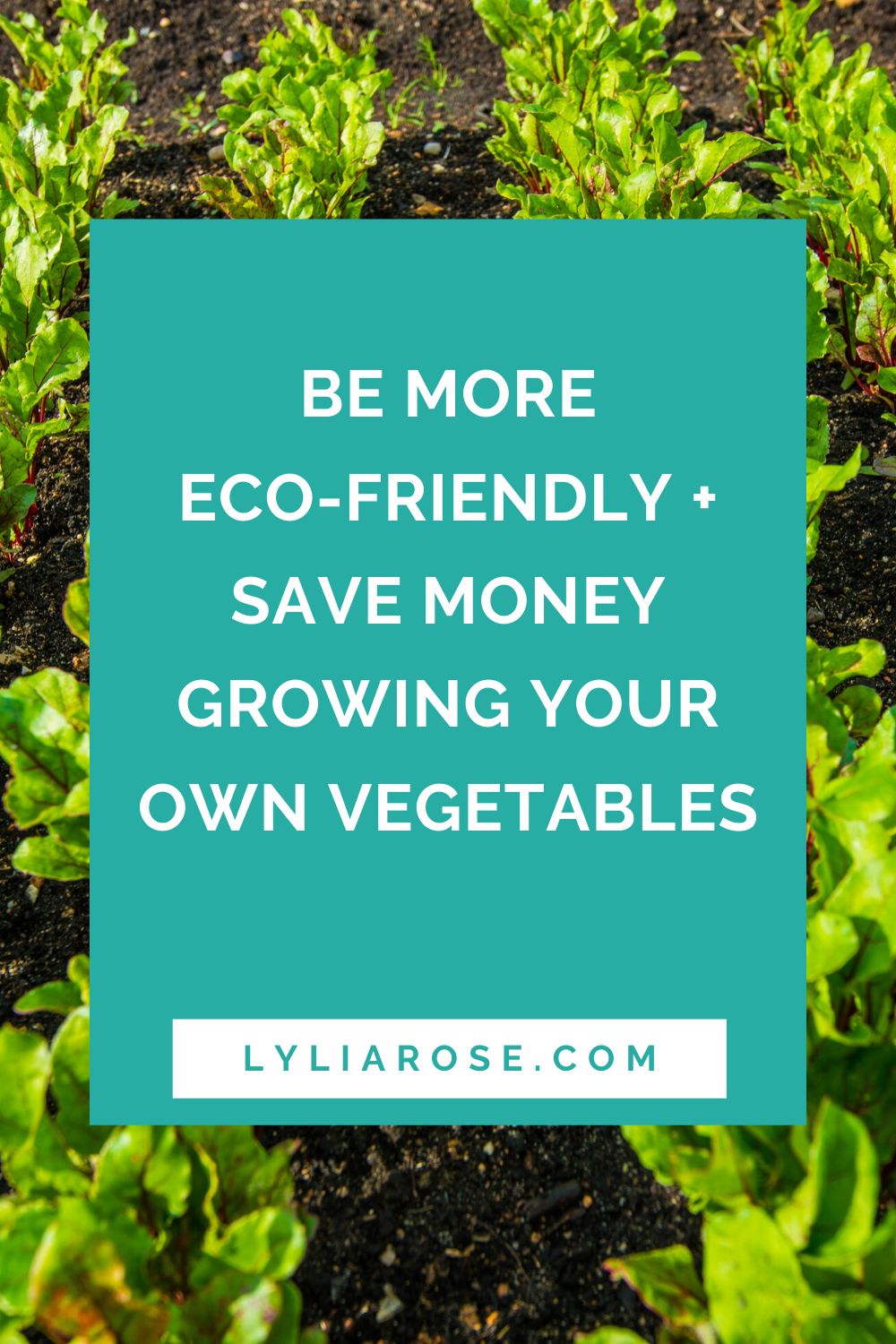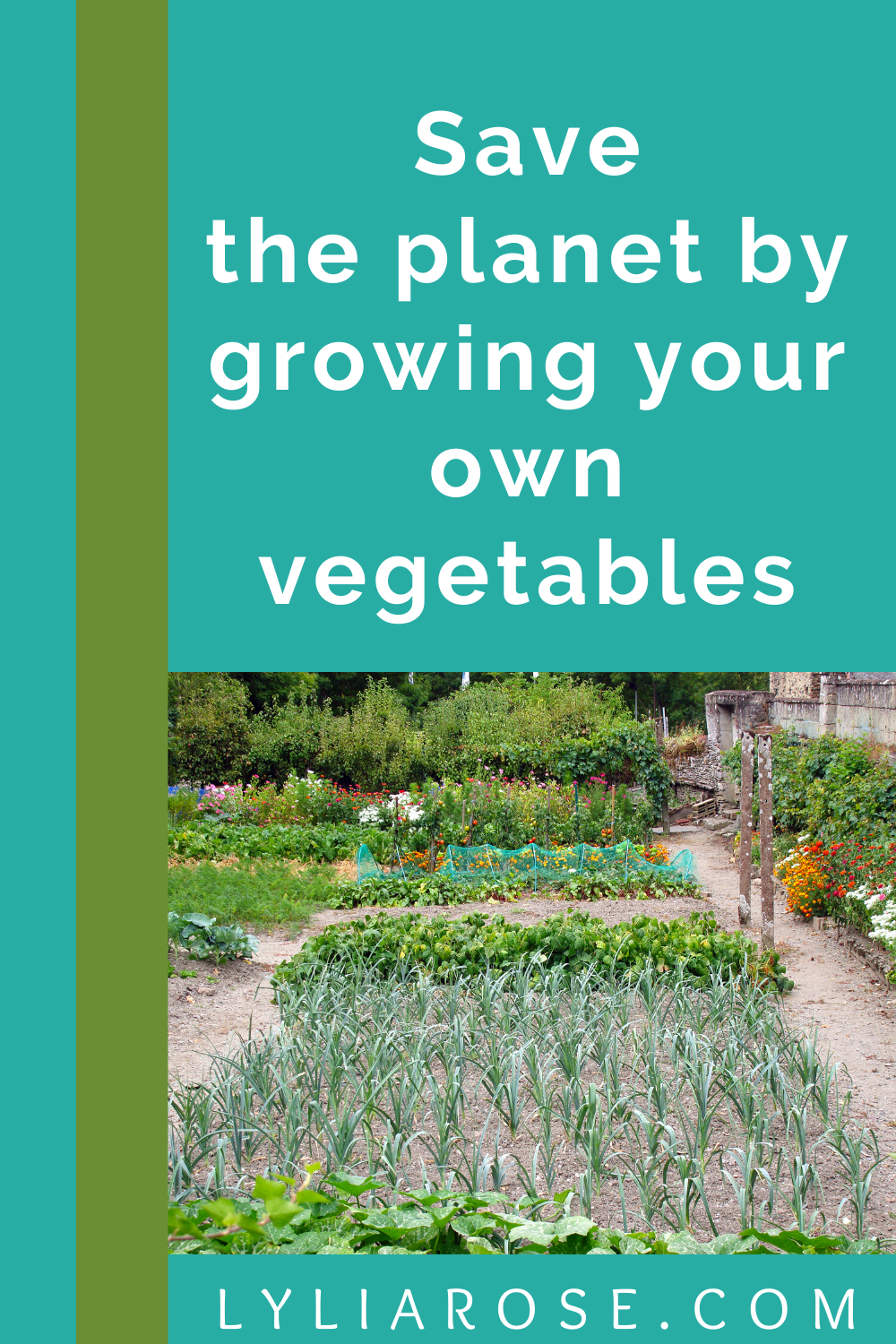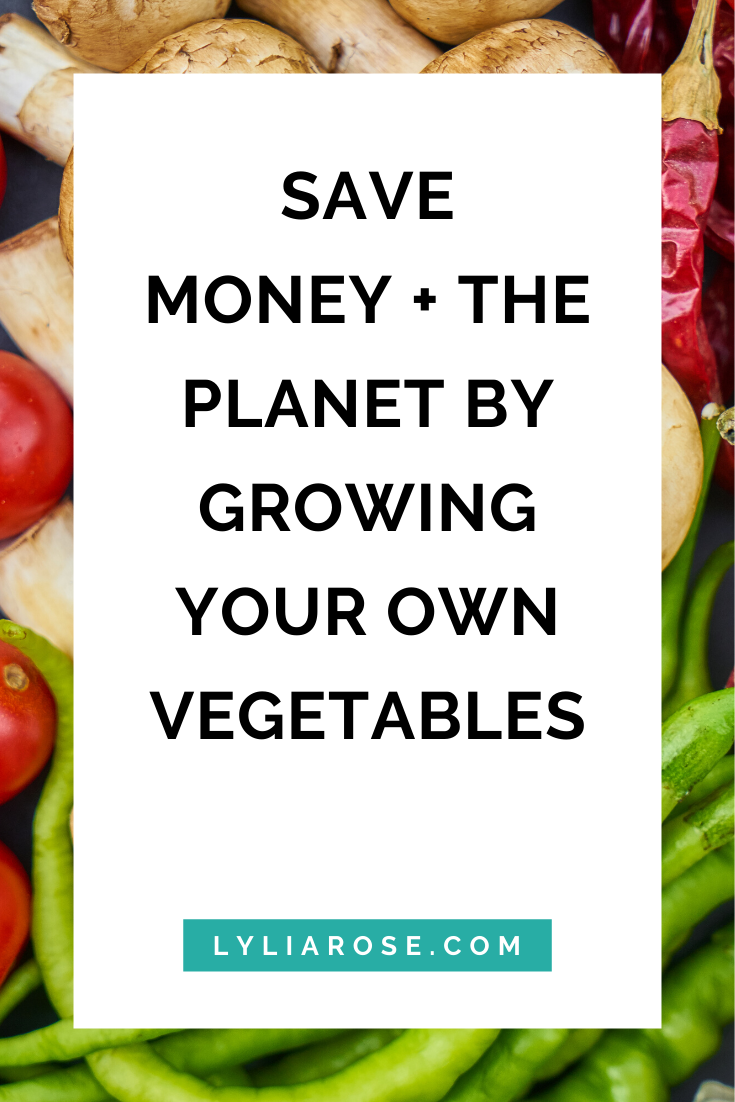Be more eco-friendly + save money by growing your own vegetables
Posted on
If you want to save money and help the environment at the same time then you should consider growing your own vegetables in a garden or allotment.
We are all aware of the impact of manufacturing, agriculture and transport on the environment. Unfortunately it's all a big cause of pollution.
Plus there's the packaging to consider too. The amount of plastic that fruits and vegetables are wrapped in can be ridiculous and something that many supermarkets are now fortunately addressing.
Unless you strictly purchase only organic fruits and vegetables then toxic pesticides and fertilizers may have been used on the food you buy, and those chemicals will have an impact on the environment and your health as well.
Not only is all this processing, transport and packaging bad for the environment, but you are also paying for it again and again. Wouldn’t it be better to grow your own vegetables, save the seeds and keep getting more vegetables every year without having to always buy them?
Grow your own organic vegetable garden

One way to reduce your impact on the environment is to choose organic vegetables that are sourced locally. This means they won't use any chemicals, and if you buy locally, you can reduce the carbon footprint and avoid plastic packaging. We love Abel and Cole organic vegetable boxes as we know they support local farmers and not large corporations. They’re a little pricey, but a good investment and a good cause.
Still, it’s better to grow your own if you can!
Whilst most of us grow a few vegetables for fun or a hobby, it is possible to grow all the vegetables you need for your family to eat! Of course it would take a bit more set up, learning and effort. I’ve seen examples of this on TV programmes and various YouTube channels. It’s quite amazing and we are definitely inspired.
We grow some of our own vegetables each year, but only a small amount, so this year we have built two more vegetable patches in our garden and have plans for a future greenhouse so next year we can really start growing more!
This year we are attempting to grow leeks, carrots, courgettes, pumpkins, French beans and beetroot from seed.
We also have strawberries and raspberry plants as well as an apple, pear and plum tree which are now five years old.
We should have quite a good crop this year if all goes well and we want to expand each year, especially when the children get a bit older and don’t need a play area space in the garden.
If you want to be self-sustainable and grow all of your own vegetables, here are some important tips I’ve discovered to help you out.
How big does the garden need to be?
The first thing you're probably wondering is how much space you need to grow your own vegetables. Well, you can start in any sized space! It's possible to grow some vegetable plants in containers and pots. It's also possible to grow some things on your kitchen windowsill. You can grow some of your own food no matter how little space you have!
But what if you want to grow all your food for the whole year?
"Generally speaking, 200 square feet of garden space per person in your family will allow for a harvest that feeds everyone year-round. So, for an average family of four, plan for an 800 square-foot garden—a plot that is 20 feet by 40 feet in size should do the trick." Source
Of course aiming to feed your whole family all year round is quite a big task and there’s a lot of learning as well as trial and error, so I reckon start small and build up as you go. That's our plan and I'm not sure we'll ever be fully sustainable especially as we both work full time and we live in the UK, but I reckon with a couple more vegetable patches in our garden and a greenhouse and we'll be able to provide for ourselves for a few months every year!

Which vegetables should I grow?
As soon as you have your vegetable patches set up then you'll be keen to grow, but what should you even grow?
It's quite simple really - plant the things you are going to eat. Think about what you already eat vegetable-wise and see if you can grow these in your climate.
There’s no point in growing things you won’t ever eat! So as much as it might be a fun challenge to try and grow something rather exotic, it's a waste of time and money if no one in your household will eat it.
Think about the staples such as potatoes, onion, carrots and leeks. These are relatively easy to grow and pretty hardy.
Then how about salad items? Tomatoes, lettuces, beetroot and radish are more easy to grow crops.
What about sweetness? Strawberries are fun to grow and come back year after year, spreading every year so you tend to get more!
What should I grow if I'm short on space?
If you are short on space then think outside the box. Research vertical vegetable gardens!
There are lots of ideas online on websites like Pinterest for what you can grow vertically.
Runner beans and tomatoes can climb so these are great space saver vegetables to grow. Herbs and some salad leaves can grow in narrow planters attached to fences.
Some people even create tiered vegetable planter systems.
How should I store my homegrown vegetables?
If you have an abundance of veggies from your garden then you don't want to waste a single thing. If possible then pick the vegetables as you need to use them. There will be no fresher vegetables in your meals!
However in order to increase your yields you do need to regularly pick the vegetables as they are ready to encourage more to grow.
If you have more than you can eat then consider preserving your veggies.
Chop them up and lay them on a tray in the freezer. Once frozen then bag them up and keep in the freezer. This process stops them from freezing together in big clumps!
You can also learn how to pickle, dry and can your vegetables for even more ways to eat them in the future!
How can I save money with a vegetable patch?
To set up a vegetable patch might require a little investment at first as you will need to buy compost, seeds, plants and you might need to buy or build some planters. Once all of this is set up then you want to become self sufficient with your growing to make it save money.
Learn how to save seeds from what you grow and then you'll never have to buy seeds or plants from a shop again. Your home grown fruits and veggies will just keep on giving year after year.
Rather than wasting money on store bought compost, make your own instead. You can create your own compost bins and add all your left over food scraps and peels. They take around a year or so to decompose into a usable compost, but in the long run you will save money by making your own.
Growing our own food will stop the need for so much food being transported around the country and the world. It's also a great hobby to have and so rewarding!
More grow your own blog posts
- Easy grow your own vegetables for children through the seasons
- Growing your own: a goal for the New Year? Tips to get you started
- Is it time for you to grow your own vegetable garden?
- 6 benefits of allotment gardening
Pin for later!

